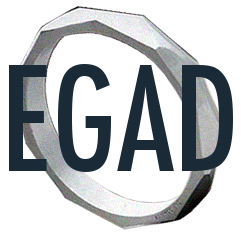Attribute Maps
![]()
There are a number of ways of creating visual representations of programming. Below, two distinct approaches are contrasted:
Mapping Attributes and Indicators to Courses:![]()
Some schools have approached the mapping process by first articulating indicators for each graduate outcome then identifying the courses in the program where those indicators are supported. This method is particularly useful if you know what you intend your program to look like and the learning you want it to support.
| Graduate Attribute | Indicators | Developed in | Assessed in | Assessment Tool used |
| Lifelong Learning | Critically evaluates procured information for authority, currency and objectivity | APSC-100 MECH-212 MECH-460 |
MECH-460 | Project proposal report |
| MECH-490 | Oral exam | |||
| Describes professional and academic societies in the discipline and how new knowledge enters the discipline | APSC-100 MECH-20 MECH-333 MECH-490 |
MECH-490 | Undergraduate thesis | |
| Identifies resources and professional associations that address own ongoing professional development | MECH-20 MECH-490 Co-op |
MECH-490 | Pre-graduation interview | |
| Co-op | Post co-op report |
Mapping Courses to Attributes:![]()
There is an alternative mapping method that is particularly useful in cases where indicators have yet to be articulated. Start with listing courses in the program down one side of the mapping grid and list the graduate attributes that are supported in each course. Including additional information such as instructional methods and assessment tools will give insight into the types of activities and components that instructors deem relevant to each attribute. Those components will serve as the foundation for articulating indicators for each attribute.
| Course | Grad Attributes Supported | Instructional Methods | Assessment tool(s) |
| APSC-100 (Engineering practice) | – Communication – Individual & Team Work – Professionalism – Lifelong Learning -Problem analysis (open-ended) – Investigation – Ethics and equity |
Design project Experimental project Model eliciting activity |
Project reports Oral presentations Peer evaluations Supervisor evaluation All rubic-based |
| APSC-171 (Calculus I) | – Knowledge – Problem analysis (closed-ended) |
Lecture independent work | Targeted question on final exam |
Course Progression Maps
![]()
The purpose of course progression maps is to provide a visual representation of the relationship among courses in a program and to illustrate the curricular supports in place for students’ skill and knowledge development. Mapping the progression of courses through a program invites opportunities to assess curriculum flow, coherence and balance of required and elective course.
[singlepic id=55 w=600 h=411 mode=watermark float=]
